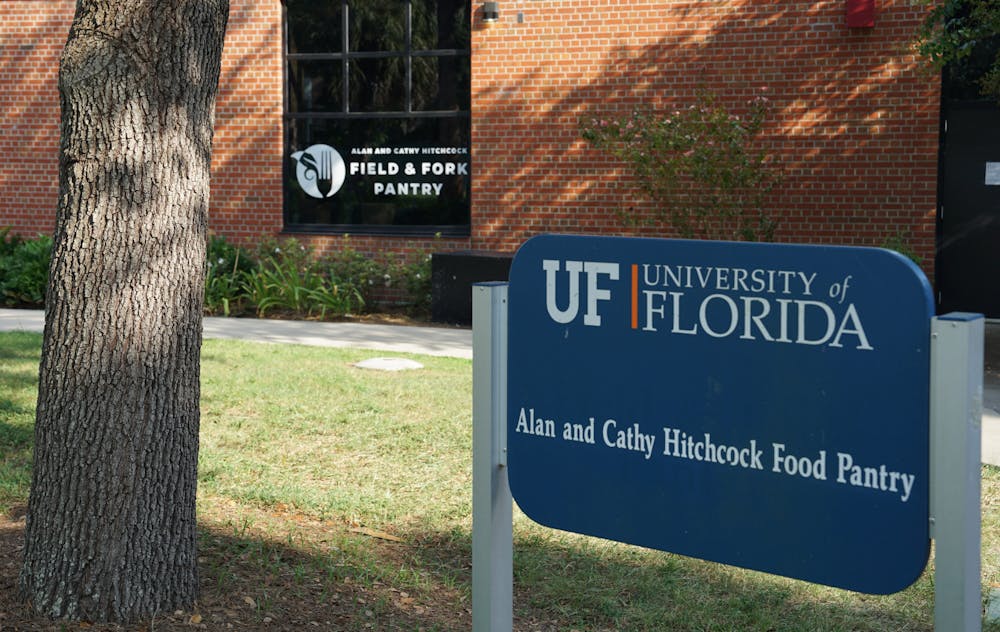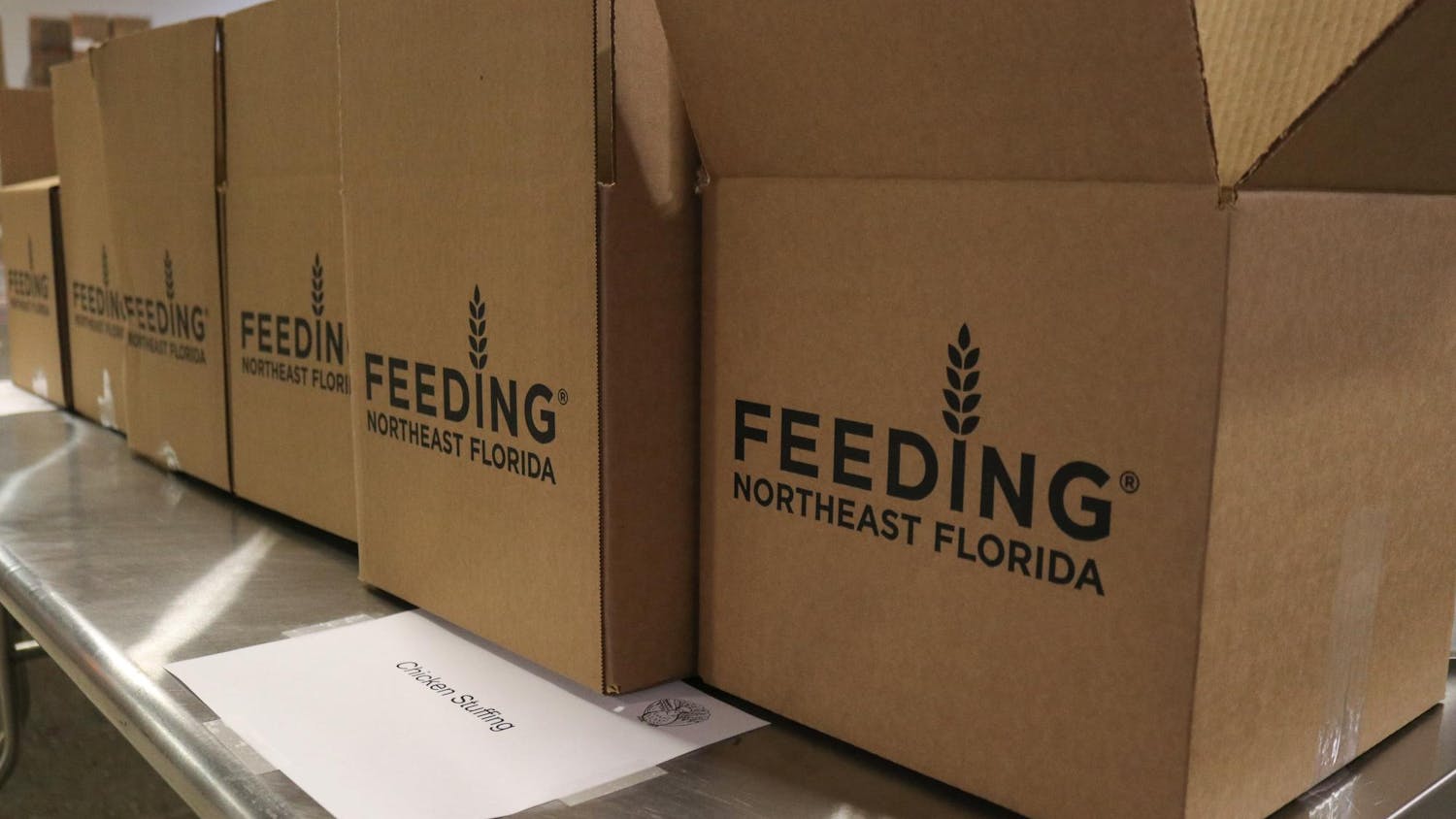When Santa Fe College health sciences junior Tyra Ashley enrolled in classes this semester, she didn’t expect she’d have to switch to online learning so she could work overtime as a daycare teacher to afford groceries.
“I tried to apply for food stamps and was denied,” Ashley said. “To be able to afford the basics of living I had to take online classes so I could work more.”
As the 21-year-old prepares to transfer to UF, she said she worries about how the higher tuition bill will impact her ability to eat.
“I know once I transfer, the cost of tuition will increase, but I will need to work less,” Ashley said. “I will need more time to study and will actually need to be in person for classes.”
Ashley is one of many food insecure K-12 and college students in Gainesville who lack access to reliable, nutritious meals.
Food insecurity refers to the “limited or uncertain availability of nutritionally adequate and safe foods, or limited or uncertain ability to acquire acceptable foods in socially acceptable ways,” according to the United States Department of Agriculture.
An estimated 48% of students in two-year institutions and 41% of students at four-year institutions reported experiencing food insecurity within the preceding 30 days of the survey, according to Temple University’s Hope Center for College, Community, and Justice.
The food insecurity rate in Alachua County has remained higher than the overall rate in Florida since 2014. A 2021 report from the city based on USDA data identified 11 food deserts — low-income areas where a substantial number of residents have low access to a supermarket or large grocery store — in Gainesville.
Danielle Guess is a coordinator of UF’s Hitchcock Field and Fork Pantry, an on-campus food pantry that serves any UF student, faculty or staff member experiencing food insecurity as long as they have their UF ID number.
Food insecurity looks different for all UF students, Guess said.
“[It] may look like eating ramen because you can't afford foods you consider healthy, nutritious, or appropriate for yourself, to outright skipping meals or eating smaller meals,” Guess said.
The inflation of grocery store products increased by 5.1% in the last 12 months in the Southeast region of the U.S., according to the Bureau of Labor Statistics.
Food insecurity is not an issue that exists in isolation. Many households that experience food insecurity are also affected by issues such as low wages and medical problems, Guess said.
Anghelo Gangano, a 25-year-old UF chemistry Ph.D. student, sees the Field and Fork Pantry's popularity among UF community events featuring food as a sign of a significant food insecurity problem among graduate students.
Members of the UF student organization Graduate Assistants United have been protesting for an increase in graduate assistant wages since early 2022, as many graduate assistants have shared their struggles to afford necessities like groceries.
“We simply cannot address food insecurity without addressing pay,” he said.
Graduate students commonly attend community events through organizations like GAU to get a free meal for themselves and their families, Gangano said.
Grey Casandra Castellanos, a 19-year-old UF psychology sophomore, said she is disappointed in how expensive it is to purchase food on campus.
“The options at UF’s markets are incredibly pricey in comparison to actual grocery stores or drugstores,” Castellanos said. “At times when I have gotten sick in the past and had to get food or soup from [the] market, my wallet suffered the consequences.”
For the 2023-2024 UF academic year, the most popular meal plan among on-campus residents was priced at $2,195 for unlimited swipes and $250 Flex.
The university should provide an affordable or cost-free food delivery service for students when they are sick or physically exhausted, she said.
“Many freshmen and other students may not have anyone to help them while they’re sick, having to deal with the frustration alone with no support,” Castellanos said.
Rachel Roark, a 20-year-old UF health science junior, has a connective tissue disorder and POTS, causing issues like heat intolerance and fainting spells. An estimated 38% of food-insecure households in the U.S. included an adult with a disability, according to the USDA.
Roark is worried about how UF manages food insecurity for students with disabilities, she said.
“Most of the on-campus dining options are fast food, and there are limited options for people with dietary restrictions,” Roark said. “There are also no grocery stores on campus. Having to leave your dorm every time you need to eat can be very draining and time-consuming.”
Outside of UF and SFC, local K-12 students also find themselves suffering from food insecurity.
Stephanie Birch, former UF African American Studies program librarian, is a single mother to a daughter in high school with social anxiety, a panic disorder and selective mutism. Birch’s daughter attended Glen Springs Elementary and Westwood Middle Schools between the ages of 8 and 14.
Challenged by the noisy, chaotic environment of school cafeterias, Birch said her daughter would avoid eating at school.
“If something happened in the lunchroom and things got really wild and crazy, she would just avoid going there at all,” she said.
Birch called on the school district to consider the barriers that cause children with disabilities like her daughter to skip meals in school when addressing food insecurity among K-12 students.
However, Birch is appreciative of the previous efforts the school district has made to assist its food-insecure students. While her daughter attended schools in the county, she said there was a grant program that provided free breakfast and lunch to qualified students.
“The grant program also continued during breaks, so when school was out of session, you could still get lunch,” she said.
Ian Carlos Claudio García is the garden manager of the Alachua County Public School’s Farm to School program, which serves fresh produce from local farms to K-12 students.
The school district launched the program after receiving a grant from the USDA in 2014.
“When the program first started, we were only delivering to the schools in low-income areas and as the program grew, now we deliver to all the schools in the county,” García said.
Harvested food that isn't delivered to schools is donated to local nonprofit food banks like St. Francis House, which many ACPS students visit for meals, he said.
“I think that a really big way that we provide support to [ACPS families] in need is by our weekly deliveries to food banks,” García said.
Contact Jinelle at jvazquez@alligator.org. Follow them on Twitter @vazquezjinelle.
Jinelle Vazquez is a senior at UF pursuing a major in Public Health with a minor in Indigenous Studies. They currently report for the enterprise desk covering health. In their free time, they enjoy hiking, photography and making art.






